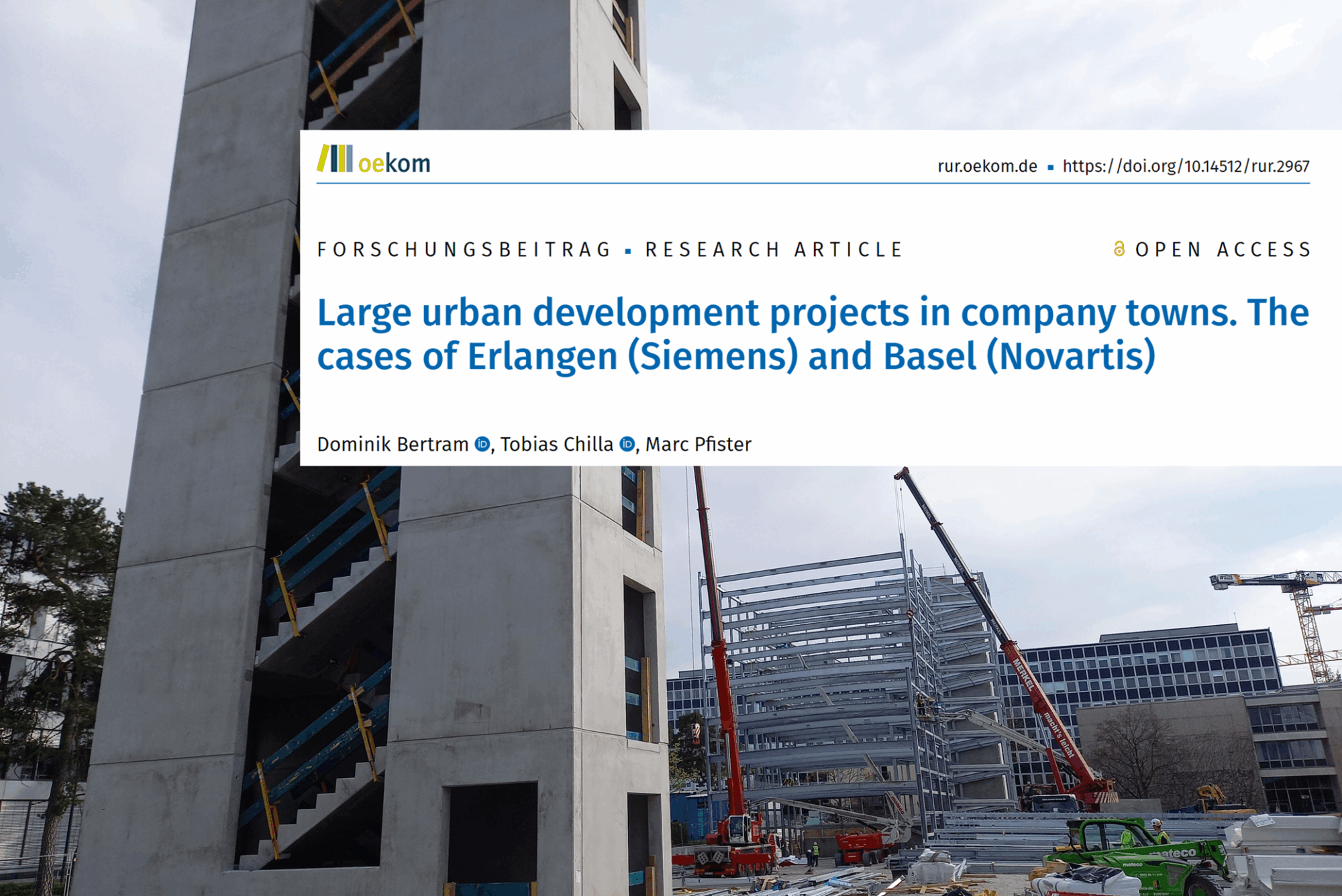Insights from Erlangen (Siemens) and Basel (Novartis)
Our latest research, published in Raumforschung und Raumordnung | Spatial Research and Planning, examines the urban integration of major company campuses, focusing on Siemens in Erlangen and Novartis in Basel. We identify key challenges and conditions for successfully embedding such campuses into existing urban dynamics.
The literature on large-scale urban development projects often focuses on drastic failures and their causes. Recently, however, success factors have attracted more attention. In both perspectives, management approaches, participation logics and political strategies are prominent themes. Yet, the symbolic dimension of such projects is rarely considered—despite symbolic meaning being widely recognised as crucial in urban development.
We explore this symbolic dimension through two cases of urban entrepreneurial development: the Novartis Campus in Basel (Switzerland) and the Siemens Campus in Erlangen (Germany). Our empirical study is based on thematic press analyses and reflects on the idea that a fit between urban symbolism and societal expectations is key to smooth implementation in large-scale urban projects, particularly in company towns.
In both cases, urban integration, architecture and design prove highly relevant. These soft factors show that success depends not only on technical professionalism. Rather, the right symbolism in the urban context, combined with strong project investment, emerges as a decisive factor.
Reference:
Bertram, D., Chilla, T., & Pfister, M. (2025). Large urban development projects in company towns. The cases of Erlangen (Siemens) and Basel (Novartis). Raumforschung und Raumordnung | Spatial Research and Planning. https://doi.org/10.14512/rur.2967
For more research, visit our Lab on ResearchGate.

